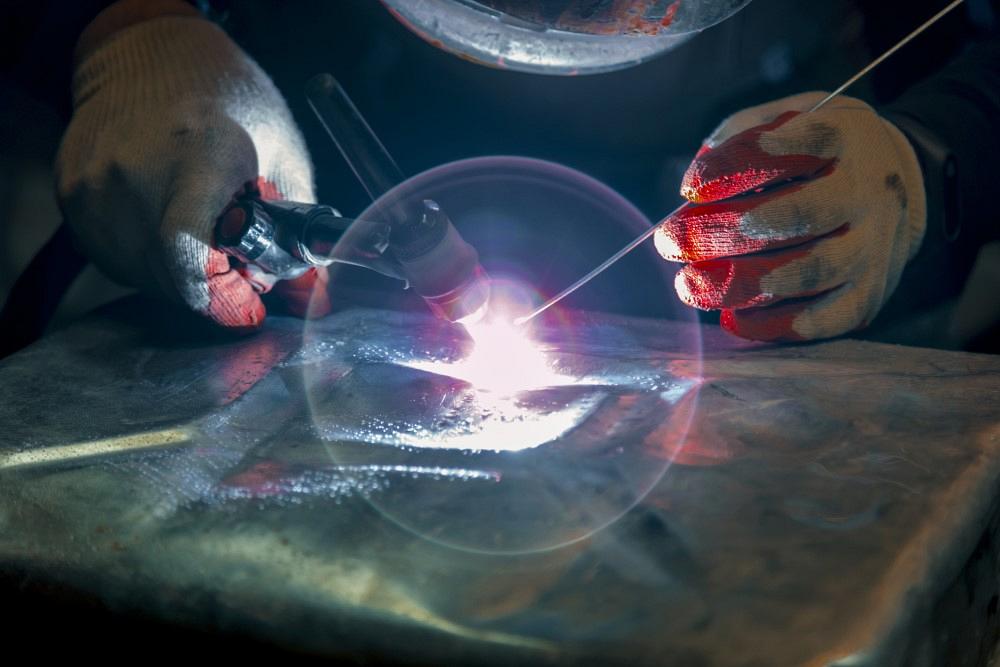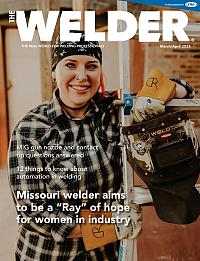Technical Liaison Manager
- FMA
- The Fabricator
- FABTECH
- Canadian Metalworking
Categories
- Additive Manufacturing
- Aluminum Welding
- Arc Welding
- Assembly and Joining
- Automation and Robotics
- Bending and Forming
- Consumables
- Cutting and Weld Prep
- Electric Vehicles
- En Español
- Finishing
- Hydroforming
- Laser Cutting
- Laser Welding
- Machining
- Manufacturing Software
- Materials Handling
- Metals/Materials
- Oxyfuel Cutting
- Plasma Cutting
- Power Tools
- Punching and Other Holemaking
- Roll Forming
- Safety
- Sawing
- Shearing
- Shop Management
- Testing and Measuring
- Tube and Pipe Fabrication
- Tube and Pipe Production
- Waterjet Cutting
Industry Directory
Webcasts
Podcasts
FAB 40
Advertise
Subscribe
Account Login
Search
Understanding the relationship between deposition rate, deposition efficiency, and production output
- By David Meyer and Rob Koltz
- March 25, 2023
- Article
- Consumables
Our sales project estimators often raise questions about published filler metal data sheets from welding manufacturers. It appears there is some confusion throughout the industry about published data that lists recommended welding parameters, deposition rates, deposition efficiency, and what we experience from our welding production results. Could you please clarify these terms and how they relate to what we experience?
Absolutely! Very often, these terms are misunderstood and utilized incorrectly for weld metal estimating. Let's first take a moment to define each of these terms.
Deposition rate is the expected weld metal weight deposited per hour to the weld joint based on published welding parameters and shielding gases, if utilized at 100% arc-on time.
Please keep in mind, wire-fed welding processes such as GMAW and FCAW (metal core included) are constant voltage (CV) processes, in most cases. This means the wire feed speed is constant during the welding operation, and therefore wire consumption (proportional to deposition rate) also is constant. SMAW or SAW are typically constant current (CC) weld processes. With CC processes, the wire or electrode feed rate is varied to maintain a stable arc, so deposition rate is somewhat less predictable. Arc length or contact-tip-to-work distance (CTTWD) will significantly affect the amount of filler metal consumed when using CC welding processes.
Deposition efficiency is the amount of weld metal deposited divided by the amount of filler metal consumed. SAW and GTAW deposition efficiency (if using a filler metal) is around 99%; GMAW (solid and metal-cored wires) is between 92% and 98%, depending on shielding gas type and wire transfer mode; FCAW averages about 87%; and SMAW averages around 65%. However, SMAW deposition efficiency is much lower if the welder leaves a long stub when changing electrodes.
While high-deposition-efficiency processes are attractive, deposition efficiency does not tell the whole story. SAW, in most cases, requires a fair amount of automation with consistent weld joints. Among all processes, GTAW is the slowest welding process with the lowest deposition rate. On the other hand, FCAW is a very robust process that performs well with rust and mill scale and can be used out of position easily with high-quality weld deposits. In short, don't use deposition efficiency as your only factor when choosing a welding process, but use it as a tool to optimize your application.
The manufacturer's published welding parameters are typically for processes such GMAW, FCAW, and SMAW. These values are based on wire or electrode diameter, shielding gas type (if utilized), and CTTWD. The ranges are based on tests to produce repeatable, acceptable welding deposit results. If you are employing a prequalified welding procedure, you will need to stay within the range of parameters recommended by the manufacturer.
When estimating welding time for a job, it is critical to fully understand how to use deposition rate. As stated in the definition, these values are based on 100% arc-on time (sometimes called duty cycle). However, 100% arc-on time is never actually achieved.
When it comes to weld manufacturing, welding productivity is measured by operating factor. This is the amount of actual arc-on time per one hour of labor per welder. The industry average is about 20%, or 12 minutes of arc-on time out of every hour. Much of the time during the day is spent loading and unloading parts, cleaning, repositioning between weld joints, etc.
SAW is the only process that readily approaches 100% arc-on time and similarly 100% operating factor in fully automated applications; all other processes are typically much lower. For example, if you are welding with a large-diameter flux-cored wire with a published deposition rate of 20 lbs./hr., you could expect an actual deposition rate of 4.0 lbs./hr. at 20% operating factor. The operating factor may vary drastically for your specific application.
A common mistake made during job bids is assuming all purchased filler metal will become weld metal. Remember, each process has deposition efficiency; the amount of filler metal purchased will always be greater than the amount of weld metal needed.
For example, if the job requires 10,000 lbs. of weld metal, we take that number and divide it by the deposition efficiency to determine the amount of required filler metal. So, if you are using flux-cored wire with 87% deposition efficiency, 11,494 lbs. of flux-cored wire will be required.
About the Authors


Rob Koltz
Application Engineer
411 S. Ebenezer Rd.
Florence, 29501
636-485-2253
About the Publication
Related Companies
subscribe now

The Welder, formerly known as Practical Welding Today, is a showcase of the real people who make the products we use and work with every day. This magazine has served the welding community in North America well for more than 20 years.
start your free subscription- Stay connected from anywhere

Easily access valuable industry resources now with full access to the digital edition of The Fabricator.

Easily access valuable industry resources now with full access to the digital edition of The Welder.

Easily access valuable industry resources now with full access to the digital edition of The Tube and Pipe Journal.
- Podcasting
- Podcast:
- The Fabricator Podcast
- Published:
- 04/16/2024
- Running Time:
- 63:29
In this episode of The Fabricator Podcast, Caleb Chamberlain, co-founder and CEO of OSH Cut, discusses his company’s...
- Trending Articles
Sheffield Forgemasters makes global leap in welding technology

Welding student from Utah to represent the U.S. at WorldSkills 2024

Lincoln Electric announces executive appointments

Lincoln Electric acquires RedViking

Engine-driven welding machines include integrated air compressors

- Industry Events
16th Annual Safety Conference
- April 30 - May 1, 2024
- Elgin,
Pipe and Tube Conference
- May 21 - 22, 2024
- Omaha, NE
World-Class Roll Forming Workshop
- June 5 - 6, 2024
- Louisville, KY
Advanced Laser Application Workshop
- June 25 - 27, 2024
- Novi, MI




























